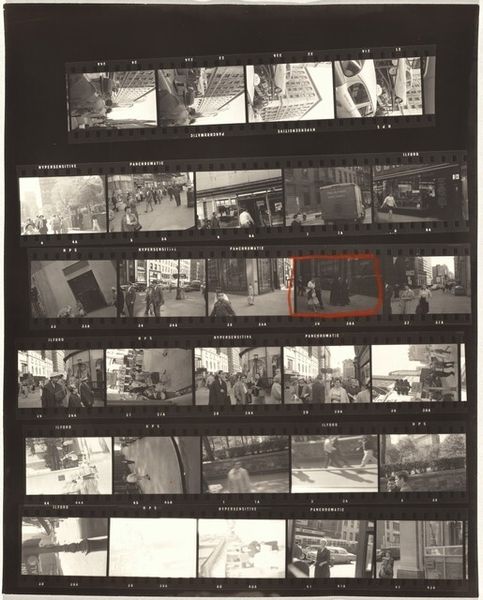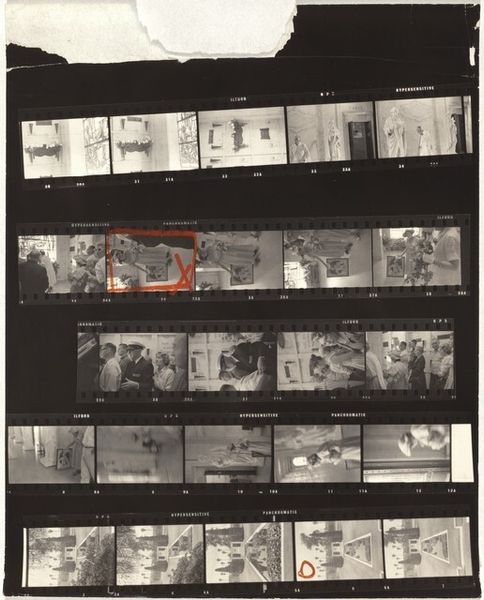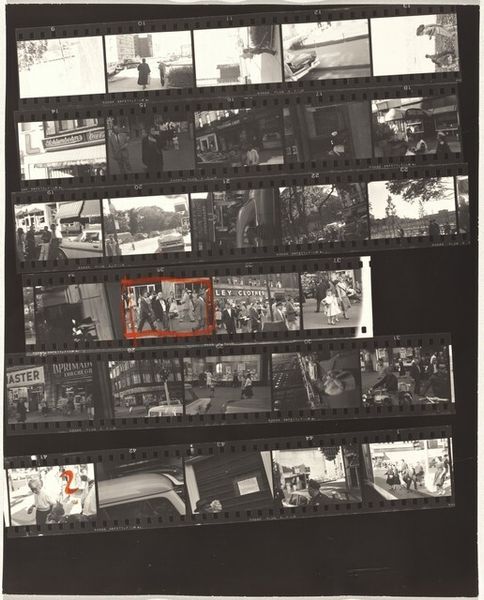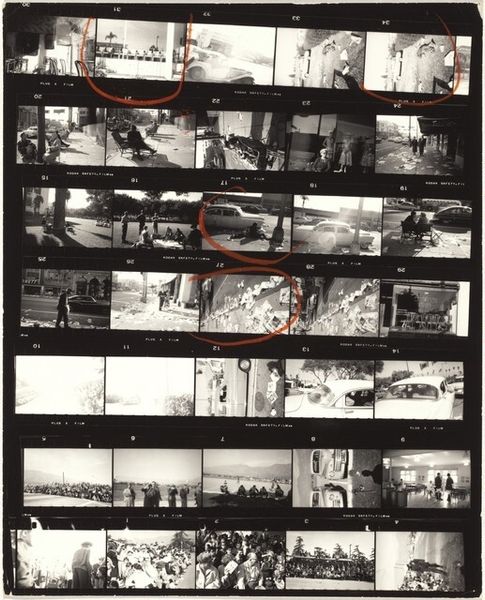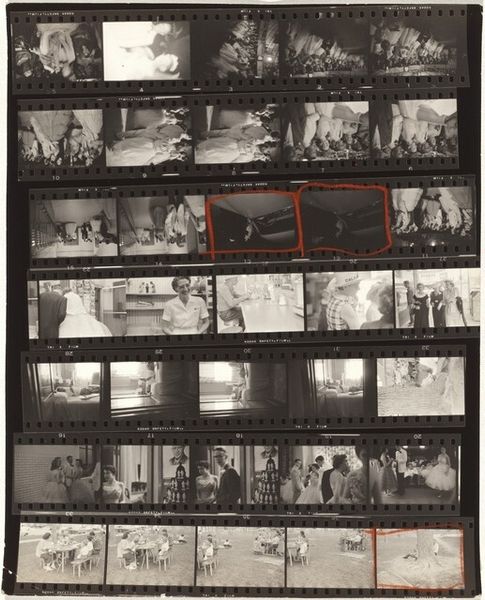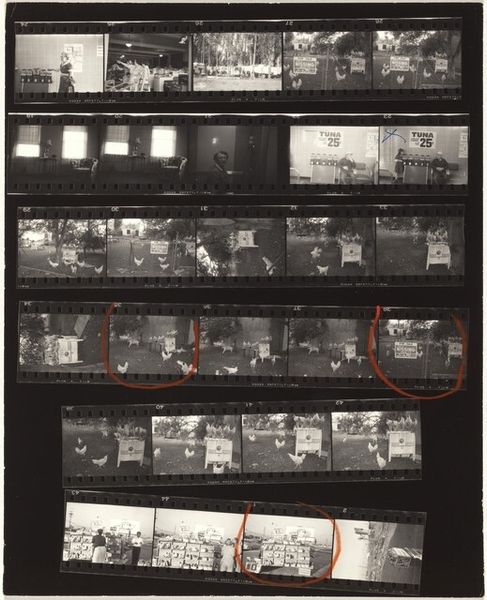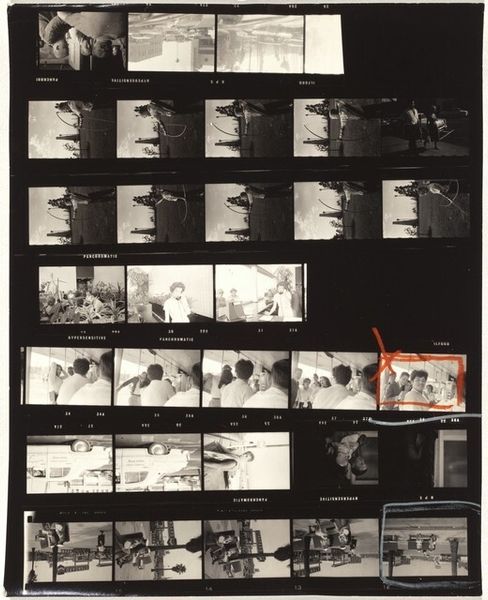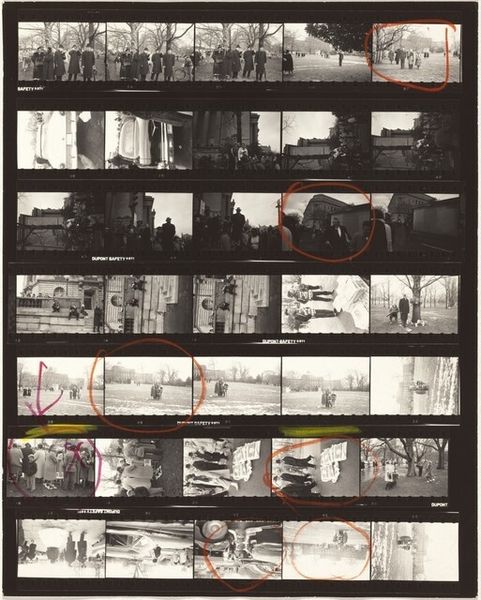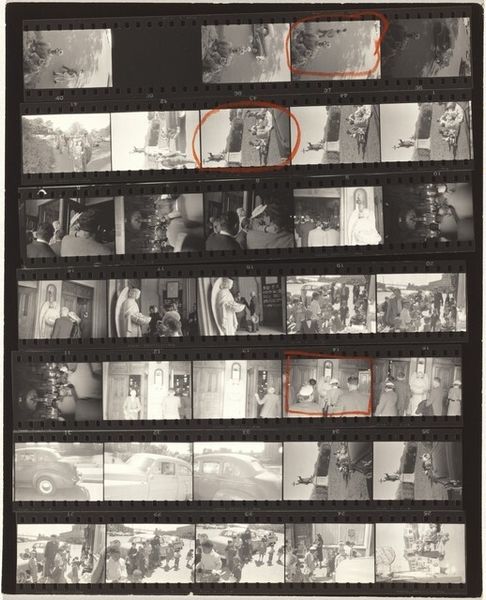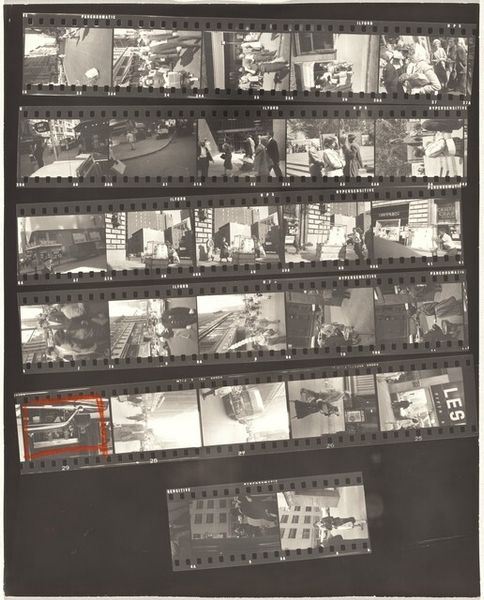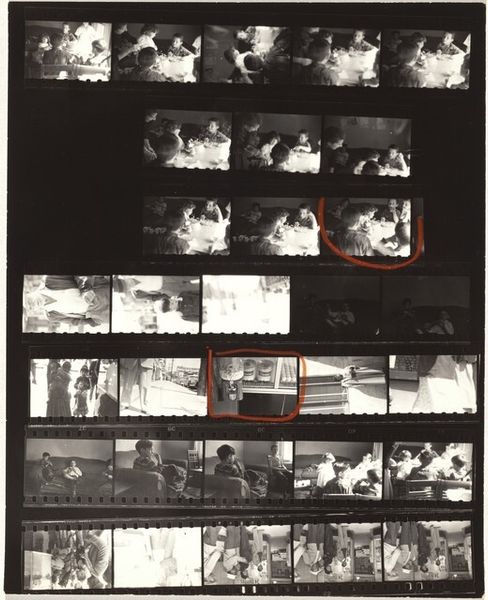
photography
#
portrait
#
film photography
#
landscape
#
street-photography
#
photography
#
modernism
Dimensions: overall: 25.2 x 20.1 cm (9 15/16 x 7 15/16 in.)
Copyright: National Gallery of Art: CC0 1.0
Curator: Here we have Robert Frank’s “Guggenheim 22--Brunswick County, North Carolina,” a photograph created in 1955. It is one sheet with different cuts of photographies on it. What’s catching your eye initially? Editor: It feels… fragmented, almost deliberately so. Like a series of snapshots held together, telling a broken narrative. I see bits of landscapes, interiors, portraits... almost ghostly in their monochrome presentation. Curator: Precisely. Think about Frank's journey. He was documenting America on a Guggenheim Fellowship. What does the format itself communicate, do you think? Editor: Like scattered memories? Each image a little portal, a brief encounter with the everyday. This arrangement gives this one sheet of different photos an intimacy and informality. Almost like leafing through someone’s personal album, where you're piecing things together for yourself. Curator: The very graininess, the high contrast, they weren’t accidental. He was after a certain kind of truth—rough around the edges, yes, but undeniably real. Take a closer look at some images from that film: you find these common folks going about their lives and it evokes themes like loneliness, transience and economic disparity. Editor: Absolutely, the use of high contrast is so striking—the shadows almost consume the light. It highlights this sort of beautiful bleakness that’s present throughout. It's raw. I get a feeling like some pictures represent homey settings while other give outdoor or street feelings. Curator: This rawness was revolutionary. Many found his work to be almost un-American but it paved the way for generations of photographers. It really challenged a certain aesthetic—the slick, the picture-perfect—that had dominated photography until that time. It captures, at once, particular moments, people, places, but then layers on larger reflections on post-war America, challenging ideas of what a national identity means through fragmented storytelling and revealing untold histories. Editor: So much story embedded, not just in the images themselves, but in their arrangement. This one sheet really tells another story: of a raw artist who went off and left an emotional legacy and an incredible social record, by showing this world in monochrome. It's still impacting our visions even today. Curator: Indeed. Frank pushed us to look differently, to feel more acutely, and to embrace the imperfect. A fitting sentiment to hold with us as we continue through this gallery today.
Comments
No comments
Be the first to comment and join the conversation on the ultimate creative platform.
